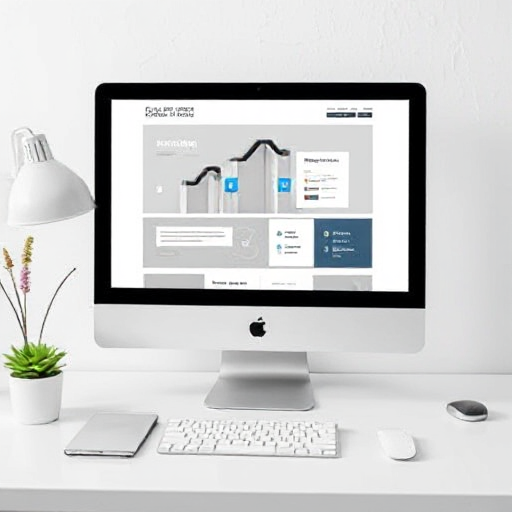Blogging On GitHub: A Step-by-Step Guide For Developers And Technical Writers
GitHub, primarily known for version control and collaboration in software development, is also a great platform for blogging—especially for developers, tech writers, and those looking to share their knowledge with the coding community. GitHub Pages, a feature of GitHub, allows you to host static websites directly from your repository, making it a fantastic tool for creating a personal blog or technical documentation.
Find Out How To Make Money As A Full-Time Writer/Blogger Guide
In this guide, we will show you how to set up and manage a blog on GitHub using GitHub Pages, from creating a repository to customizing your blog’s layout.
Why Use GitHub for Blogging?
Before we dive into the technical details, let’s explore why GitHub can be an excellent choice for blogging, especially for technical content:
- Free Hosting: GitHub Pages offers free hosting for your blog. As long as you are okay with hosting static content (HTML, CSS, JavaScript), you can publish your blog without worrying about hosting fees.
- Version Control: With GitHub, all your blog posts are version-controlled. This means you can track changes, revert to previous versions, and collaborate with others seamlessly.
- Customizable: GitHub Pages allows full customization of your blog’s design using HTML, CSS, and JavaScript. This makes it ideal for developers who want total control over the layout and appearance of their blog.
- Integration with Jekyll: GitHub Pages works smoothly with Jekyll, a simple static site generator. Jekyll turns markdown files into a beautiful, blog-ready website. It’s widely used in the tech community for creating blogs, documentation, and personal websites.
- Perfect for Developers: If you’re a developer, GitHub is a familiar tool. It’s ideal for writing and sharing technical blogs, code snippets, tutorials, and project documentation.
Find Out How To Make Money As A Full-Time Writer/Blogger Guide
Setting Up Your Blog on GitHub
To create a blog on GitHub, you will need a GitHub account and some basic knowledge of version control, Git, and markdown. Here’s how to get started:
1. Create a New GitHub Repository
- First, log into your GitHub account and create a new repository. You can name it something like yourusername.github.io, which is a special repository name that GitHub will use to serve your website.
- Make sure to initialize the repository with a README file (optional) and a .gitignore for excluding unnecessary files.
2. Enable GitHub Pages
- After creating the repository, go to the Settings tab in your repository.
- Scroll down to the GitHub Pages section and under Source, select main or master branch. If you want to use a different folder (like /docs), you can choose that as well.
GitHub will then generate a URL for your site (something like https://yourusername.github.io), which you can use to access your blog.
3. Install Jekyll (Optional)
While you can host any static website on GitHub Pages, using a static site generator like Jekyll simplifies the blogging process. Jekyll can turn markdown files into blog posts and provides features like pagination, categories, and easy theming.
Find Out How To Make Money As A Full-Time Writer/Blogger Guide
- To get started with Jekyll, follow the official Jekyll installation guide.
After installing Jekyll, you can create a new Jekyll site by running the following command:
bash
Copy code
jekyll new myblog
cd myblog
- Push the contents of your local Jekyll blog to your GitHub repository.
4. Add Your Blog Content
With Jekyll installed, you can start creating blog posts. Jekyll uses markdown files for content creation, so each blog post will be a markdown file that includes front matter (metadata) at the top of the file.
Here’s an example of what a Jekyll blog post might look like:
markdown
Copy code
—
layout: post
title: “My First GitHub Blog Post”
date: 2024-11-10
categories: [tutorial, github]
tags: [GitHub, blogging, tech]
—
# Introduction to GitHub Blogging
Welcome to my first blog post on GitHub! In this post, I’ll show you how to set up a personal blog using GitHub Pages and Jekyll.
This markdown file contains front matter at the top, which specifies the layout, title, date, categories, and tags for the blog post. The content of the blog post follows below.
Find Out How To Make Money As A Full-Time Writer/Blogger Guide
5. Customize the Design
One of the benefits of using GitHub Pages with Jekyll is that you can choose from a variety of pre-made themes to customize the design of your blog.
- Jekyll offers many built-in themes, which you can activate by modifying your repository’s _config.yml file. This file contains settings for your Jekyll blog, including the theme, title, description, and other configuration options.
For example, to use the minima theme, add the following line to your _config.yml:
yaml
Copy code
theme: minima
You can also customize the design further by modifying the CSS files and HTML templates in the repository. This allows you to create a fully personalized blog that suits your style.
6. Push Your Changes to GitHub
Once you’ve added your blog posts and customized the design, you need to push your changes to GitHub. You can do this through Git commands or GitHub Desktop.
First, commit your changes locally:
bash
Copy code
git add .
git commit -m “Add first blog post”
Then, push your changes to GitHub:
bash
Copy code
git push origin main
Your blog will be updated, and you can view it at https://yourusername.github.io.
Find Out How To Make Money As A Full-Time Writer/Blogger Guide
7. Maintaining Your Blog
Now that your blog is set up and live, you can continue adding new posts, updating content, and customizing the design. Since your blog is version-controlled on GitHub, you have full control over the history of your posts and can easily revert to previous versions if needed.
Best Practices for Blogging on GitHub
Here are a few best practices to keep in mind as you blog on GitHub:
- Write in Markdown: Markdown is easy to use and great for writing blog content. It’s lightweight, portable, and supported by GitHub Pages and Jekyll.
- Leverage Tags and Categories: Use tags and categories in the front matter of your posts to keep content organized and make it easier for visitors to navigate your blog.
- Commit Frequently: Use Git to manage your blog’s version history. Commit your changes frequently to ensure you have a record of your work and can easily roll back if needed.
- SEO Optimization: While GitHub Pages doesn’t come with built-in SEO tools, you can optimize your content by adding meta descriptions, title tags, and social media previews. You can also use tools like Google Analytics to track traffic.
- Engage with the GitHub Community: GitHub is a community of developers and tech enthusiasts. Share your blog on GitHub Discussions or link it from your GitHub profile to increase visibility.
Find Out How To Make Money As A Full-Time Writer/Blogger Guide
Blogging on GitHub is an excellent option for developers, technical writers, and anyone comfortable with version control who wants a high degree of customization and control over their blog. With GitHub Pages, Jekyll, and markdown, you can easily set up and maintain a professional blog to showcase your technical expertise or share tutorials. Whether you’re writing about coding, software development, or tech topics, GitHub Pages offers a powerful and free platform to share your knowledge with the world.







